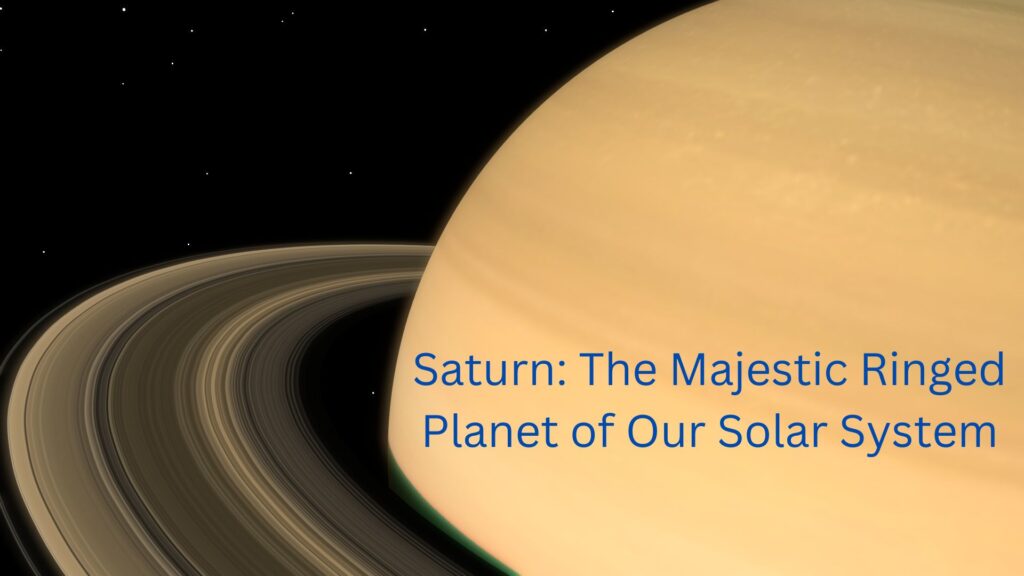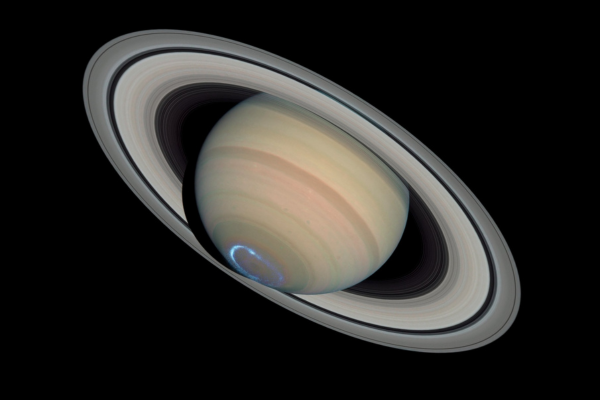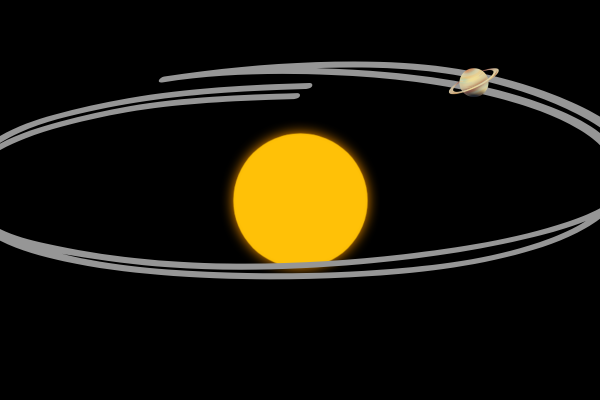

Saturn, the sixth planet from the Sun, is one of the most fascinating celestial bodies in our solar system. For millennia, astronomers and scientists have been enthralled by Saturn’s beautiful ring system. In this article, we’ll look at the fascinating aspects about Saturn, its distinguishing qualities, and why it remains a hot topic in space travel.
Saturn Composition and Atmosphere
Saturn is a gas giant made mostly of hydrogen (approximately 96%) and helium (about 3%). Its atmosphere has layers of ammonia clouds, which contribute to its pale yellow color. Saturn’s weather system is one of the most active in the solar system, with winds reaching speeds of up to 1,800 kilometers per hour (1,118 miles per hour).
The Iconic Rings of Saturn
Saturn’s rings are its most distinguishing feature. These rings, made primarily of ice particles with traces of rock and dust, extend up to 282,000 kilometers (175,000 miles) from the planet. Despite their immense extent, the rings are very thin, with an average thickness of about 10 meters (33 ft).
Astronomers have found seven major rings, A through G, along with several smaller ringlets. These formations are thought to be the remains of comets, asteroids, or shattered moons that were too near to Saturn’s strong gravitational pull.
Moons of Saturn
Saturn has 146 confirmed moons, with 62 officially named. Titan, the largest of these moons, is of particular interest due to its dense atmosphere and surface lakes of liquid methane and ethane. With a diameter of 5,150 kilometers (3,200 miles), Titan is even larger than the planet Mercury.
Another notable moon, Enceladus, has a surface covered in ice and is known for its geysers that eject water vapor into space. These features make Enceladus a prime candidate in the search for extraterrestrial life.
Saturn orbit and rotation
Saturn circles the Sun at an average distance of 1.4 billion kilometers (886 million miles), with each orbit lasting 29.5 Earth years. Despite its leisurely orbit, Saturn rotates quickly, with each day lasting just 10 hours and 33 minutes. The planet’s fast rotation causes it to flatten somewhat in the poles and swell at the equator.
Exploration of Saturn
Since the 17th century, Saturn has been intensively examined using telescopes. Pioneer 11 was the first spacecraft to visit Saturn in 1979, and it was followed by other missions, notably the legendary Cassini-Huygens mission, which gave ground-breaking information between 2004 and 2017.
Why Saturn remains a fascination
Saturn’s stunning rings, numerous moons, and dynamic atmosphere make it an essential part of comprehending our solar system’s history and development. Saturn continues to pique the interest of scientists, whether they are looking for life on Titan and Enceladus or studying its complicated ring system.


